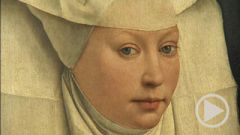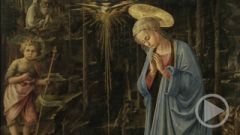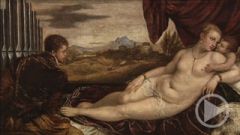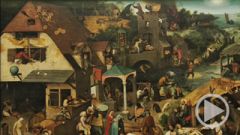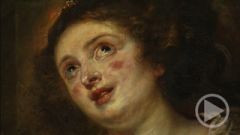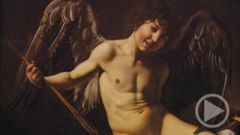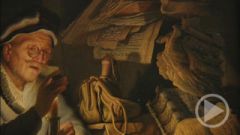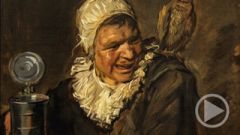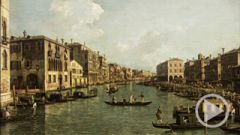- Home
- »
- Germany
- »
- Berlin
- »
- Gemaeldegalerie
- »
- The Berlin Gemaeldegallery -A Genius conquers Europe
A Genius conquers Europe
A Genius conquers Europe
Albrecht Dürer from Nuremberg first visited Venice in 1494, and returned in 1505, staying for two years. During this time, he made the acquaintance of Giovanni Bellini. Dürer was very impressed: He wrote that although Bellini was very old, he was still "the best of painters".
Dürer was also rather confident of his own ability, and demonstrated his mastery of Venetian style with this Madonna.
According to Babette Hartwieg, Chief Restorer at the Gemaeldegalerie:
„We are fortunate to have a lot of information about Dürer's time in Venice. But even if we did not know so much, we could still see that the picture was created in Italy or southern Europe – because of the wood it is painted on: poplar. But unfortunately, poplar is very soft and susceptible to woodworm, as one can see on the back of the panel. The worms liked to eat not only the wood but also the layer of paste coating it. So from behind they ate their way to the paint. We can see that in some spots, there is nothing behind the paint and there are slight indentations in the surface where the holes in the wood are.“
The subject matter is typically Italian. No German painter had before painted John the Baptist as a child. Nonetheless, Dürer has included many German elements, too. The lily of the valley, for example, is the German counterpart to the lily. In the landscape behind the Virgin Mary, he shows ancient ruins and Italian architecture, but on the right, a German half-timbered house. Like the goldfinch in Lippi, the siskin is an allusion to the Crown of Thorns. It is clear why Dürer is so renowned for his depictions of animals: The bird is full of life, three-dimensional, as if caught in motion. One could almost reach out and stroke its soft feathers.
At the bottom is a cartellino, or small painted piece of paper, in Italian manner, bearing the artists's inscription in Latin: "Albrecht Dürer the German painted the picture in 1506" and his famous monogram.
Five hundred years on, the Virgin Mary does not look quite as fresh as when Dürer painted her.

Babette Hartwieg:
„Some parts of the painting are in wonderful condition – the angel and the siskin. They are excellently preserved. Other parts have become extremely thin or much more transparent. What we see here is the underdrawing, with its very fine hatching – it is now very visible. And you can see the ground shining through all over. That is of course a great pity. One consequence is that the white highlights contrast very starkly with the yellowish ground. The transitions would have been much more fluid. But we cannot do anything about it. It is just a result of the panel getting older.“
Dürer crossed the Alps twice and kept a record of what he saw in ink and paint. The central hall of the Gemäldegalerie - a place of tranquility - corresponds to the Alps, which divide Europe in two: The architects Heinz Hilmer, Christoph Sattler and Thomas Albrecht ranged southern European art in the rooms to the left of the hall, and Netherlandish, Flemish and German art in the rooms to the right.
Albrecht Dürer brought back home the new view of art. He no longer saw himself as an artisan, but as an artist. And his pictures were informed by a close observation of the world. Dürer perfected the art of the woodcut and copperplate engraving, and was now able to reproduce his drawings, which thus reached a wider public. Dürer was the first to mark his prints systematically with his monogram. It would become his trademark, and Dürer would become the most renowned artist in all of Europe. Erasmus of Rotterdam wrote in a letter:
"I have known Dürer's name for a long time... as most illustrious in the art of painting."
Dürer influenced generations of artists. And Emperor Maximilian the First used his talents for propaganda purposes, having him design armour and fine coaches. Dürer corresponded with artists and scholars all over the world. His home remained Nuremberg, a city that had grown wealthy through commerce.
One of his friends there was the respected merchant Hieronymus Holzschuher. According to this inscription, he was 57 years old when Dürer painted him in 1526. It is one of Dürer's best portraits. As with the feathers of the siskin, it is as if one can almost feel the soft fur of the collar, which contrasts sharply with the wiry beard and the wavy hair. The great Giovanni Bellini, whom Dürer so admired, is said to have asked him once, what brushes he used to paint such fine hairs. Dürer showed him the brushes, and Bellini was dismayed to see they were the same as the ones he used.

Dürer's mastery is evident in the way he painted Holzschuher's face. It is like a landscape... the wrinkles, folds, veins under the skin, the eyelids – all marks inscribed over the course of a long life.
"The eye is the window of the soul."
Dürer took this statement of Leonardo's quite literally: The crossbars on the window opposite are reflected in Holzschuher's eyes. But Dürer shows more than outer things... It is Holzschuher's gaze that tells us about the man – a little sceptical, but friendly; energetic and resolute. This was Dürer's particular strength: If he knew the people he painted personally, then he did not just depict their face, but their character as well.
And that in turn corresponded to the function of the picture. Such a portrait was not intended merely to decorate a wall. It was meant to keep alive the memory of an individual among later generations, as a document of family history. The frame has a wooden cover, bearing the coat of arms of the Holzschuher family and that of his wife's family, the Münzers. The cover protected the painting, and that is why it is still in perfect condition.


